Social media is an extremely powerful tool. The number of active social media users now stands at 2.789 billion. That’s an enormous pool of potential engagement that you can pull from for your brand.
But how do you tap into that? How do you find your target audience and keep them interested in your brand? How do you drive your audience towards your desired goals? There are, understandably, a number of questions surrounding the use of social media when it comes to business. Managing and interacting with the various social media platforms can feel confusing, which is why we’ve put together this helpful and informative guide which covers some of the most frequently asked questions surrounding the social media sphere…
Approximate Reading Time: 15-20 minutes

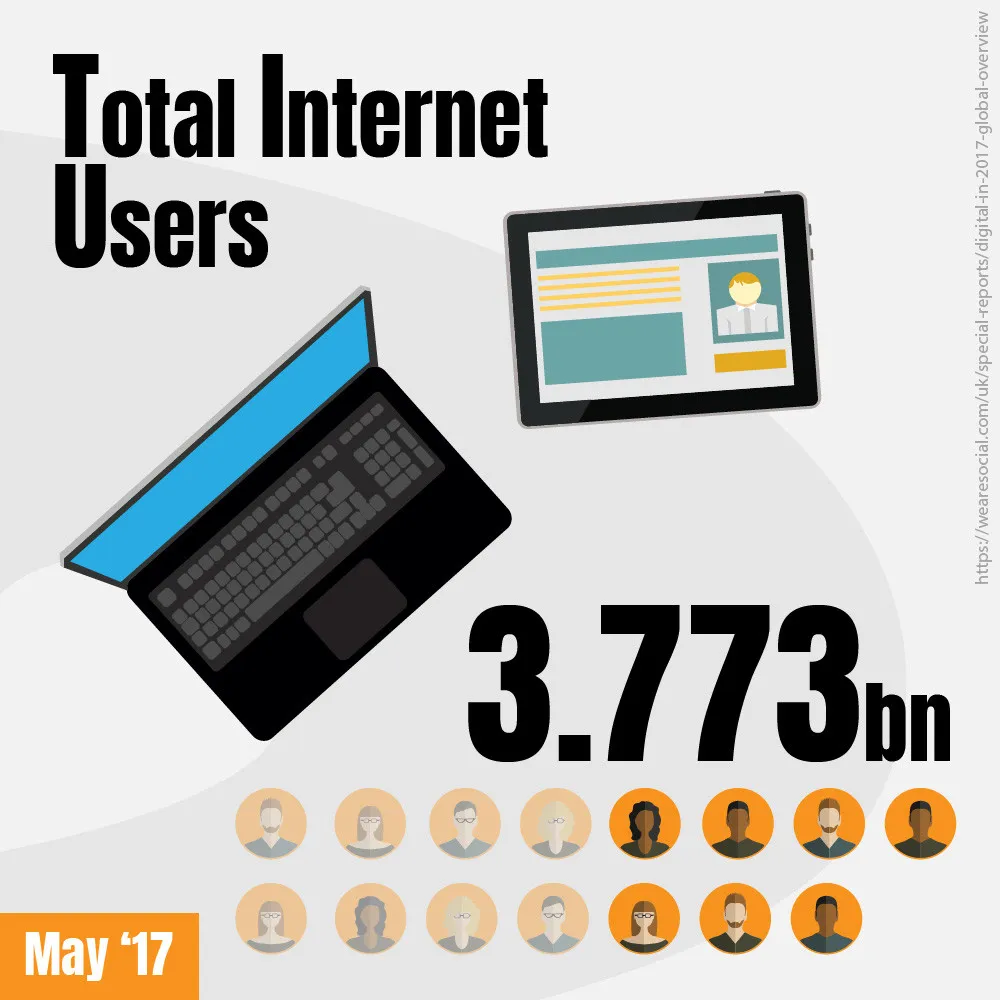
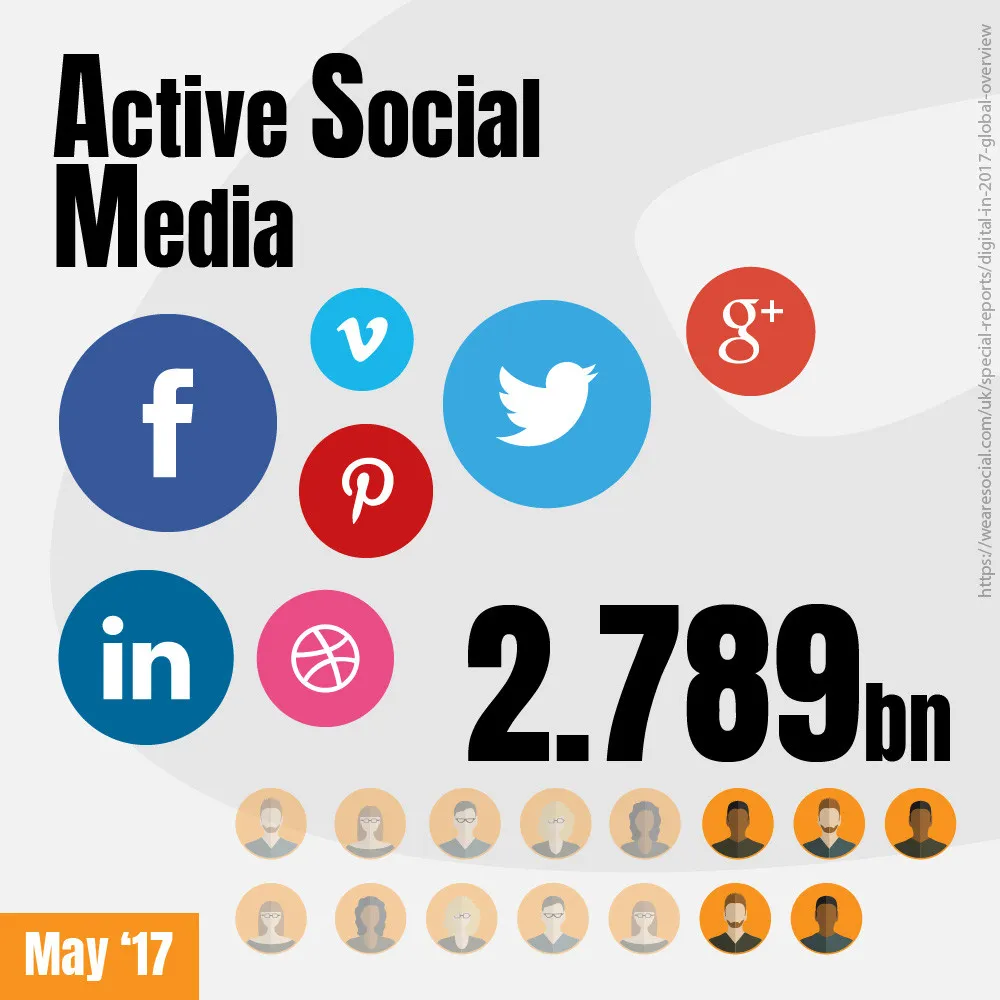
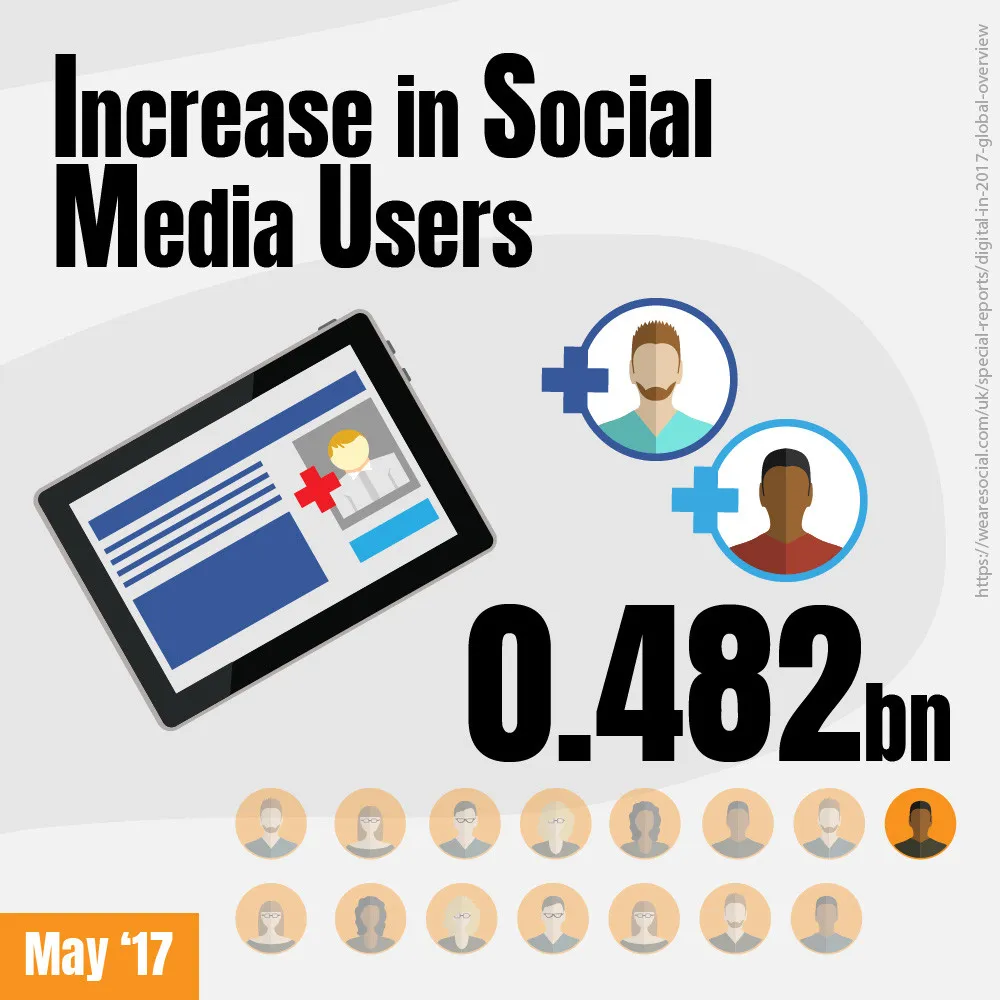
What Should Our Social Media Objective Be?
Our gem of advice when it comes to answering this question is: there’s no one size fits all solution. As a brand, you need to make decisions which result in your social media channels reaching the right people, with the right message, at the right time. Once you’ve ticked all of those boxes, you will be able to achieve your social media objective.
There are multiple reasons as to why you might want to use social media. You may be looking to increase sales of your product or service, generate awareness in your brand, build up a loyal fan base or gather data. Ultimately, this question can only be answered by you.
It’s really important to set out what you want to achieve through using social media before you do anything else. With a purpose in mind, you can make key decisions on what social media platforms you should be using. This will depend on whether you are catering for a B2B or B2C market.
Once you have chosen your channels, you can arm them with an array of interesting, engaging and appropriate content. This maintains your audience and their love of your brand. The more specific and focused you can be with your social media aims, the easier it will be to build an effective campaign and generate results.
It’s natural to feel uncertain about how to harness the power of social media and use it to your advantage. Sometimes it can feel easier to ignore it and tell yourself you can do what you want without it. However, remember that social media is extremely powerful and has the potential to reach an enormous number of people who are willing to engage with your brand. If you’re still feeling a bit daunted, chat to one of our experts today and they will be able to reassure you!
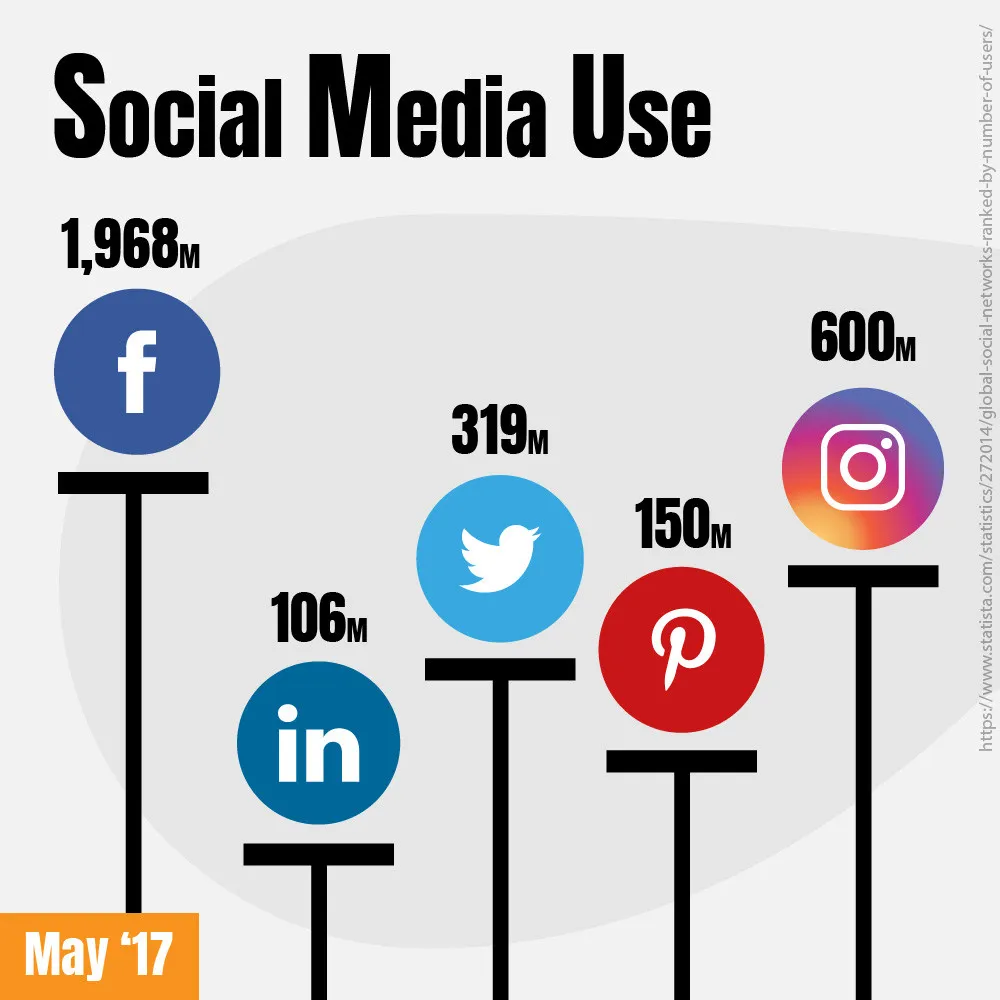
What Are The Social Media Platforms We Should Be Considering?
With so many different social media platforms available, it can feel daunting when it comes to deciding which ones you should be using for your brand. Obviously reaching your target audience is incredibly important, and social media certainly has A LOT of reach.
Although there are no definite rules when it comes to social media platforms, generally speaking, if you serve the B2B market then you’ll find that LinkedIn and Twitter will be the most effective platforms for you. However, if your market is B2C you have a far wider range of possible social avenues to pursue. Facebook and Twitter are still the largest for B2C engagement but, dependant on your product offering, visual platforms such as Instagram and Pinterest could be extremely viable platforms. Altogether, there is no right or wrong answer that dictates which social media platform you should be using. It all depends on your target market and your overall objective.
One thing we wouldn’t recommend is prioritising social media solely over other marketing avenues such as SEO and email. Social media works most effectively as a complement to other marketing channels. For example, new content that’s been created to target certain keywords for an SEO campaign can also be promoted on social media. Alternatively, a social media competition, for example, can be promoted via your email marketing channel. Find out more about Email Marketing and SEO and how they can all work together to reach your audience.
Maintaining a marketing mix that effectively reaches your audience, wherever they can be found, is the key to online success. Using platforms to support and reinforce each other, and your brand message, not only creates a strong brand identity that your audience will recognise but also allows you to reach your target audience and build a relationship that lasts.
Where Do I Get My Content From?
Populating your social media platforms with interesting, engaging, shareable content is vital to gaining and retaining an active social media following. But, obviously, you need to keep your content diverse enough to hold your audience’s interest and avoid being predictable.
There are a number of avenues you can use to discover content for your social media channels. Striking a balance between self-promotional, curated, original and user generated content will keep your feeds fresh and stimulating for your audience.
Self-promotional content can come from an exciting event that your brand hosted such as a product launch or a new partnership, or something you have achieved within your industry that has gained you recognition. You can also talk about any new products or services you may want to gain exposure for. This will keep your audience informed of the successes of your brand.
Curated content comes from industry relevant websites and social media accounts. It can take the forms of relevant news or developments that you think your audience will find interesting. By sharing this content, you will build the trust of your audience in your brand and demonstrate that you are active within your area of expertise.
Original content can be written by your brand, or by an agency your brand is working with, to share on your social media platforms. This content is unique to you and will be tailored specifically to your brand voice. Find out more about how we carefully craft content especially for brands.
User generated content comes from your audience themselves. It can be photo or video content, reviews or personal stories to name just a few. By reaching out to them directly, and inviting your audience to be a part of your brand, you are ensuring that they feel valued by a brand that they like and enjoy.
With so many different types of content, there is always something that your brand can utilise and share. This, in turn, will engage your target audience.
How Do I Maintain Brand Tone And Voice Across Social Media?
When there are so many different social media platforms, and they all cater towards different purposes, how do you maintain continuity of brand across them all? This can feel difficult at times, especially as you want your brand to be recognisable across all platforms. Having a strong brand identity is an integral part of creating a successful and identifiable online presence.
Deciding on how you want your tone and voice to sound is the first, and most important, step. Once you have decided on this, continuity across all platforms is key otherwise your audience may become confused and annoyed and you could lose customers. When it comes to social media specifically, make sure you know what your social media customer service strategy is going to be. Draw up some potential scenarios and agree on what you want the outcome to be and how you are going to get there. That way, if someone leaves a negative comment on a Facebook post, you will feel prepared to deal with it.

Other important decisions to be made include whether or not your brand uses colloquialisms and/or jargon. If so, which ones do you use? Make sure you consider the kind of language your audience will respond well to. Are they looking to your brand for an authoritative and professional voice or for something conversational and relaxed? Of course, there is no right or wrong to this, and it is all dependant on your brand and your target market.
Regardless of what you decide, the easiest way to maintain continuity across your social media platforms is to plan how you want to come across and be prepared for the kind of responses and comments you can expect from your audience. That way, nothing will surprise you and your audience will understand and familiarise themselves with your brand.
Have a look at how we tackle brand management and tone development, as well as the tonnes of other super social services that we offer!
How Do I Use Social Media To Generate Leads?
Generating leads is all about getting people into your sales funnel. There are multiple channels that customers can come through, and brands should value social media as one of them. Social media is fast, easy to track and, what’s more, allows you to gather a tonne of data on your audience.
When generating a lead from anywhere, you want to establish where the interests of your target audience lie in order to advertise to them in the most effective way. With so many people on social media now, not only do you have a huge pool of potential customers but they are all ready to share information about what they find engaging. This provides you with unique insight into who they are and what makes them tick.
Social media is fantastic at building brands, but if you treat your social media presence with the care and attention you give to your website, you’ll soon discover the potential it has to be a lead generation tool. Think about the information you want to share, how you want it to look and what/where the call-to-actions will be on your pages. After all, your social media promotes your brand and you want it to be as attractive to a potential customer as it can be.
Social media goes one step further than just generating leads. It retains them. Providing that your social media presence continues to be interesting and engaging, your audience will continue to come back for more, sharing content that they love and spreading your brand into their own personal social communities. Check out how we can capture your data, track movement from social to your website, measure growth and much more!
How Do You Engage Staff To Use Social Media?
Engaging your staff to buy into company social media accounts can be notoriously difficult. Some staff like to keep their work and personal life separate, meaning that they will be resistant to sharing company updates. Other staff may not be active on social media at all.
However, there are things that can be done to increase engagement and buy in from those that are receptive. For example, making it as easy as possible for people to access and share content will increase their sharing and engagement. Sending around an internal social media roundup email, with direct links to the posts, can also really help boost your engagement levels.
Another way of driving engagement is to increase your employee’s interest and investment in what you, as a brand, share. One way of doing this is to make some of the updates about them. This also showcases a personal and human side to your brand.
For those employees who want to engage with work on their social media, this can really help to raise your brand’s presence online. Brands that show the people behind them are more appealing to a wider audience, as well as to those that are a part of the brand. Encouraging your employees to engage with your brand on social media is the easiest way to spread the word about your brand and build an active community.
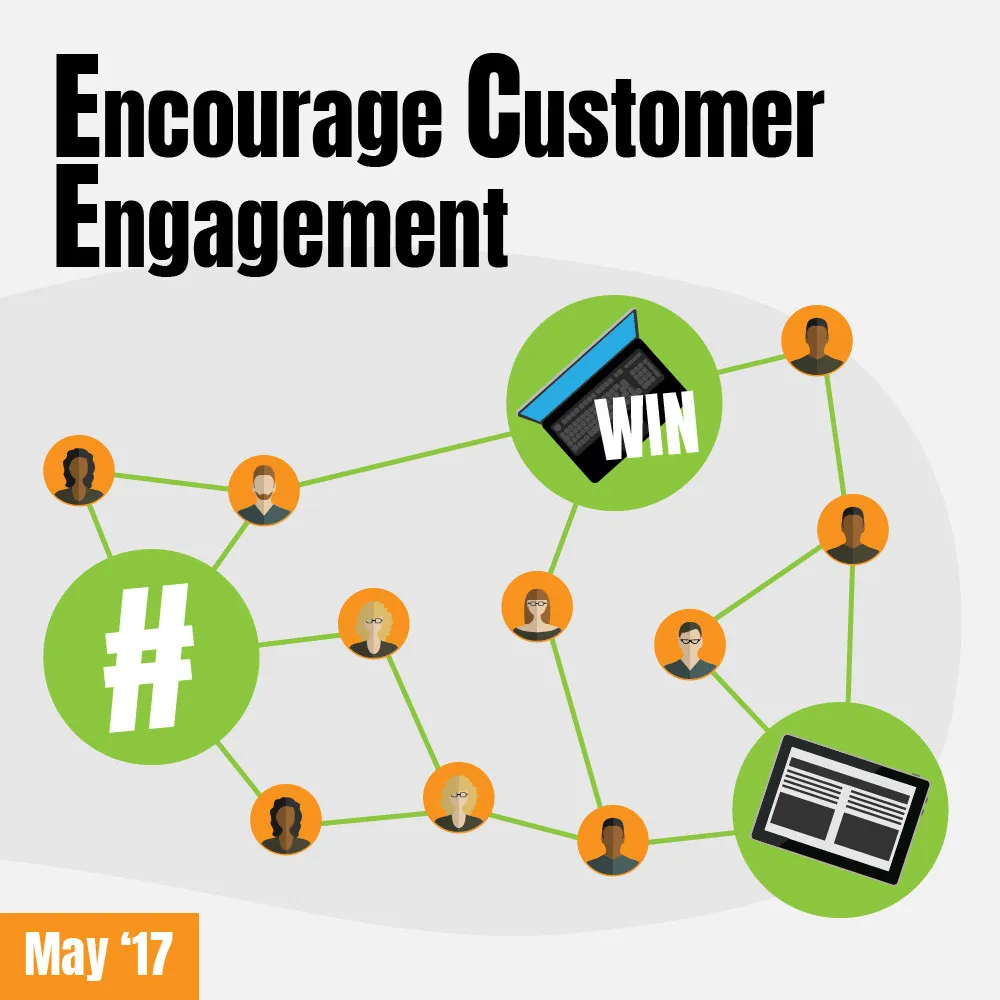
How Do We Encourage Customer Engagement Through Social Media?
With social media activity on the increase, you want your brand to be a part of all the online hype. Tweeting, sharing and tagging are a part of our everyday lives now and so many people are willing to get involved. Methods of encouraging customer engagement in your brand will vary depending upon who your target market is and where they can be found.
If you are working within a B2C environment, incentivising engagement is a quick and effective method. Giveaways and competitions that promote hashtags or encourage tagging are a fantastic way of quickly increasing reach and engagement. Sharing user generated content is also a great way of encouraging increased engagement from your fan base.
When it comes to a B2B marketplace, increased engagement is most often delivered through sharing insightful and useful information that adds value to your industry or marketplace and generates conversation, such as a whitepaper for example. This enhances your authority as a brand as well as ensuring you come across as informative.
Regardless of where your audience is online, it’s crucial that you engage with them and cater to their online needs. If you do this, they will happily distribute your message far and wide across the internet! With the far-reaching potential of social media, the rewards of generating engagement are endless. Find out more about how to track your results by reading up on Web Analytics!
How Do I Deal With Poor Customer Reviews?
Maintaining the reputation of your brand is vital and, with so many people now using social media to voice their personal comments and experiences, keeping a check on things can feel like a challenge.
Generally speaking, the best way to deal with a poor online review is to tackle it head on. There’s nothing worse than a Facebook page with a list of bad reviews that haven’t been addressed by the brand.
Quite often the best approach is to apologise for their poor experience and offer to open a dialogue somewhere away from the public eye, via email for example. This shows that you are keen to help, and want to do your utmost to resolve the issue, but at the same time you can maintain privacy over the matter.
Ultimately, social media allows people to express and share their thoughts and opinions. As long as you, as a brand, are aware of this when opening up social media channels then you can be prepared for any negativity that might come your way. Just keep an eye on the activity on your accounts and react as quickly as possible to any audience engagement, as this will enhance your presence and demonstrate that you are active on social media too!
How Can A Brand Ensure They Own Social Assets?
As social media platforms, and your audiences, grow so does their value as an asset to your brand. Issues can begin to arise around this when employees who have developed a company’s social media presence decide it’s time to move on to pastures new.
So, what can you do to prevent the loss of assets and staff in one killer blow? When concerning official company pages and accounts then the rules are clear – they are the property of the company they represent.
However, when it comes to something like a network of connections built up by a member of your sales team on LinkedIn, for example, then you unfortunately don’t have any jurisdiction over this. There are steps you can take, such as asking them to add any new connections to a company group on LinkedIn, but ultimately anything built up on a personal social media account is the property of the account owner.
When it comes to navigating social media, it’s important to understand the distinction between work accounts and personal accounts. The presence created online for a brand can be managed and monitored to extremely positive effects, so remembering to maintain that by putting in place steps to ensure continued access, regardless of employee changes, is very important.
Do You Need A Social Media Policy? If So, How Do You Create One?
As a brand, approaching social media and the “official” side of things can feel overwhelming. With personal accounts, company accounts, work profiles and administrators, it can seem like a minefield out there! The reputation of your brand is integral to your success, and naturally you want to make sure that you maintain this across all networks.
Putting it plain and simple: All businesses should have some form of social media policy in place if they want to have jurisdiction over how their employees talk about them on social networks.
For example, it is advised that you put in place regulations regarding employees sharing company sensitive information, amongst other things. And, just like any other policy, it is important to use the correct, watertight language.
As an employer, you need to work out what is acceptable and unacceptable when it comes to behaviour on social media. A clear distinction needs to be made between an employee’s work life and private life, so that there is no misinterpretation regarding the policy.
Remember to ensure that your policy is adaptable, to keep up with the ever-changing world of social media. To achieve all this, you should work with a qualified policy provider who will be able to advise you on the best way to tailor your social media policy to your brand.
For further information, please visit http://www.acas.org.uk/index.aspx?articleid=3381
These are just some of the most common questions connected to the use of social media. If you’re still stuck and would like some further help, check out our Social Media Services page. We offer a full range of social media services that drive your brand engagement and conversions. Or just get in touch and speak to one of our social media experts. They’re actually very sociable!






